#esp32 lorawan
Text
The Things Network: Primeiros passos
The Things Nework é o maior network server de LoRaWAN do planeta, sendo totalmente colaborativo e gratuito. Venha aprender a usar
A The Things Network ou TTN é um servidor de rede LoRaWAN colaborativa que permite que qualquer pessoa ou empresa possa ser um ponto de conexão LoRaWAN como também pode utilizar a cobertura já existente para conectar os end devices tudo de forma gratuita.
1 O que é The Things Network?
A TTN é um network server criado em 2015 com o objetivo de criar uma cobertura global e colaborativa de LoRaWAN…
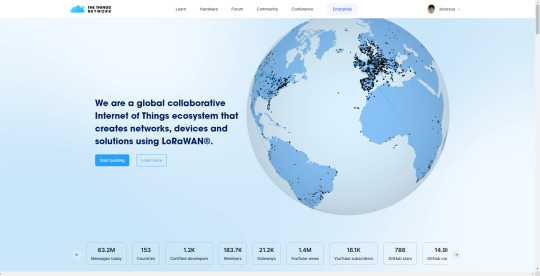
Ver no WordPress
#arduino lorawan#arduino lorawan library#esp32 lorawan#lorawan#lorawan application server#lorawan concentrator#lorawan devices#lorawan distance#lorawan gateway#lorawan network#lorawan the things network#the things network#the things network gateway#the things network map
0 notes
Text
STM32 e módulo LoRaWAN da Radioenge
Aprenda como eu fiz uma integração do módulo LoRaWAN da Radioenge e STM32 através da STM32CubeIDE
O STM32 e módulo LoRaWAN da Radioenge são uma bela junção para aplicações de baixo consumo de energia e longo alcance, tanto é que o próprio módulo tem um STM32L presente.
Este projeto foi inteiramente construído dentro da STM32CubeIDE como uma forma de estudo e exemplo, então seu funcionamento é um pouco diferente do funcionamento no Arduino IDE. De qualquer forma a infraestrutura está o mais…

View On WordPress
#arduino lorawan#arduino lorawan library#helium lorawan#lorawan#lorawan alliance#lorawan arduino#lorawan board#lorawan class a#lorawan communicator#lorawan devices#lorawan diagram#lorawan esp32#lorawan gateway#lorawan network#lorawan stm32
0 notes
Text
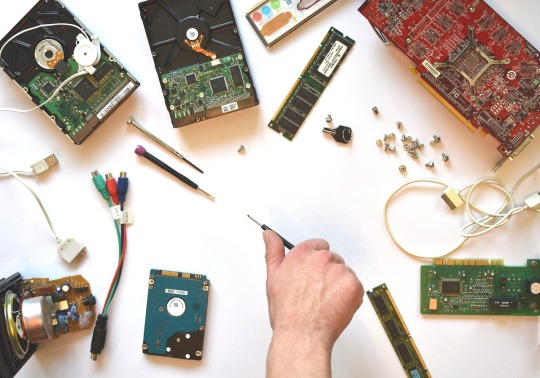
These days, some development boards come with an absolutely astounding variety of hardware. The EESP32, a tiny LoRa board with WiFi, Bluetooth, a transceiver that spans a large portion of the UHF band, and conveniences like OLED displays and an abundance of GPIO, are a perfect example. What about the documentation and firmware, though? Basically, do not say anything at all if you can not say something kind. Better yet, just take a roll.
That is not true for every LoRa dev board available, of course, but [Rop] found that to be the case with the Heltec HTIT-WB32LA. This board needed some assistance to get over the line, but it has all the bells and whistles and would be ideal for LoraWAN and Meshtastic applications. Based on his fork of the RadioLib library, which includes a library that significantly lessens wear on the ESP32's flash memory, [Rop] has contributed a fair amount to this end. The library supports all of the hardware on the board, including the pushbutton, display, power management, battery charging, and blinkers, in addition to complete radio support.
Many sample applications are included in [Jop], ranging from the minimal requirements to spin up the board to a fully functional spectrum analyzer. It is a wonderful piece of work and a wonderful way to support the LoRa community. And if you want to put one of these modules to work, you’re certainly in the right place. We’ve got everything from LoRaWAN networks to the magic of Meshtastic, so take your pick and get hacking.
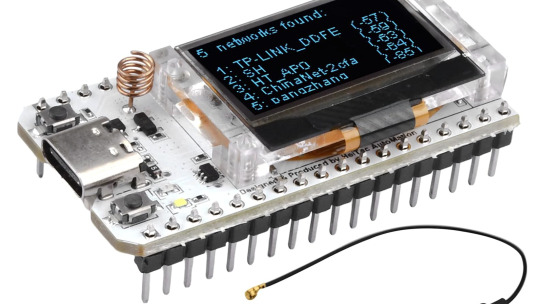
1 note
·
View note
Text
Exploring LoRa Modules: SX1262, ESP32, and More for Long-Range IoT Communication
In today’s rapidly evolving world of Internet of Things (IoT), the need for wireless communication devices is on the rise. One of the most popular wireless communication technologies used for IoT applications is the LoRa module. In this blog post, we will discuss the LoRa module and its various components such as the SX1262, ESP32, Wi-Fi, Bluetooth modules, and some popular LoRa modules such as the Lorawan-LPS8, Dragino LoRa Bee V1.1, and Hoperf RFM95–98(W).
What is a LoRa Module?
A LoRa module is a low-power, long-range wireless communication module that uses the LoRa modulation technique to enable long-range communication over the air. LoRa stands for “Long Range” and is a proprietary wireless technology that enables long-range communication between two devices without requiring a high-power transmitter or receiver. This technology is designed for low-power, long-range communication with a low data rate, making it ideal for IoT applications.

SX1262:
The SX1262 is a high-performance, sub-GHz transceiver from Semtech that is designed for long-range communication applications. It supports LoRa modulation, as well as FSK, GFSK, and OOK modulation schemes. It operates on the 150–960 MHz frequency range and provides up to 22 dBm of output power. The SX1262 also features a built-in packet handler, CRC, and AES encryption for secure communication. It is an essential component in LoRa modules as it enables long-range communication with low power consumption.
ESP32:
The ESP32 is a low-cost, low-power, Wi-Fi, and Bluetooth-enabled microcontroller from Espressif Systems. It is an ideal platform for IoT applications as it provides a powerful CPU, low power consumption, and built-in connectivity options. The ESP32 supports Wi-Fi 802.11b/g/n, Bluetooth v4.2 and BLE, making it easy to connect to a wide range of devices. It also features an integrated dual-core processor with a clock speed of up to 240 MHz and 520 KB SRAM, making it a powerful platform for IoT applications.
Wi-Fi Module:
The Wi-Fi module is an essential component of LoRa modules as it enables the device to connect to a Wi-Fi network. This connectivity option enables the device to connect to the internet and send and receive data from other devices on the network. The Wi-Fi module can be integrated into the ESP32 or provided as a separate module that can be connected to the device via an interface such as SPI or UART.
Bluetooth Module:
The Bluetooth module is another important component of LoRa modules that enables the device to communicate with other Bluetooth-enabled devices. This connectivity option is ideal for short-range communication between devices such as smartphones, tablets, and other IoT devices. The Bluetooth module can be integrated into the ESP32 or provided as a separate module that can be connected to the device via an interface such as SPI or UART.
Lorawan-LPS8:
The Lorawan-LPS8 is a compact, low-power LoRaWAN module that is designed for IoT applications. It is based on the SX1262 and features a built-in GPS, making it ideal for tracking applications. The module supports LoRaWAN 1.0.2 and provides up to 20 dBm of output power. It also features a built-in antenna, making it easy to integrate into devices. The Lorawan-LPS8 is an excellent choice for applications that require long-range communication with low power consumption and GPS tracking capabilities.
Dragino LoRa Bee V1.1:
The Dragino LoRa Bee V1.1 is another popular LoRa module that is designed for IoT applications. It is based on the Hoperf RFM95–98(W) transceiver and features a built-in ATmega328P microcontroller, making it easy to program and integrate into devices. The module supports LoRa modulation and provides up to 20 dBm of output power. It also features a built-in antenna, making it easy to integrate into devices. The Dragino LoRa Bee V1.1 is an excellent choice for applications that require low-cost, low-power, and long-range communication.
Hoperf RFM95–98(W):
The Hoperf RFM95–98(W) is a high-performance, sub-GHz transceiver that is designed for long-range communication applications. It supports LoRa modulation, as well as FSK, GFSK, and OOK modulation schemes. It operates on the 137–1020 MHz frequency range and provides up to 20 dBm of output power. The Hoperf RFM95–98(W) also features a built-in packet handler, CRC, and AES encryption for secure communication. It is an excellent choice for applications that require long-range communication with low power consumption.
LoRa modules are used in a wide range of IoT applications such as smart cities, smart agriculture, asset tracking, and industrial automation. The low-power, long-range communication capabilities of LoRa modules make them ideal for applications that require remote monitoring and control of devices and sensors.
Conclusion:
In conclusion, LoRa modules are an essential component of IoT applications that require low-power, long-range communication capabilities. The various components of LoRa modules such as the SX1262, ESP32, Wi-Fi, and Bluetooth modules work together to enable long-range communication with low power consumption. Some popular LoRa modules such as the Lorawan-LPS8, Dragino LoRa Bee V1.1, and Hoperf RFM95–98(W) are excellent choices for applications that require low-cost, low-power, and long-range communication. With the increasing demand for IoT applications, LoRa modules will continue to play a significant role in the development of IoT devices and solutions.
0 notes
Photo

Це пізда, це відбувається насправді. Коли ти жив мирно, а на твою країну напали повномасштабно російські війська. Але згинуть наші вороженьки. It's going around really. Believe only the Ukrainian media .. because they see it with their own eyes. #ukraine🇺🇦 #ukrainegirl #ukraine #esp32 #diyelectronics #electronics #arduino #makers #украина #ukraine #diy #prototype #aelmaker #электроника #homemade #electronics #arduinomega #18650 #diyprojects #lorawan #lora (Zaporozhye, Ukraine) https://www.instagram.com/p/CaXTaORt7YB/?utm_medium=tumblr
#ukraine🇺🇦#ukrainegirl#ukraine#esp32#diyelectronics#electronics#arduino#makers#украина#diy#prototype#aelmaker#электроника#homemade#arduinomega#18650#diyprojects#lorawan#lora
0 notes
Text
Ab heute lieferbar: LoRaWAN-Knoten im IoT
Ab heute lieferbar: LoRaWAN-Knoten im IoT
LoRaWAN-Knoten im IoT
Fertige und selbst aufgebaute Arduino-Knoten im TTN
Print: ISBN 978-3-89576-467-7,
eBook: ISBN 978-3-89576-468-4
www.elektor.de
Auf der The Things Conference 2021 hatte TTN angekündigt, dass The Things Network V2 im September 2021 endgültig geschlossen wird. Wegen der Pandemie wurde dieser Termin später bis Dezember 2021 verlängert, um der Community noch mehr Zeit zu…
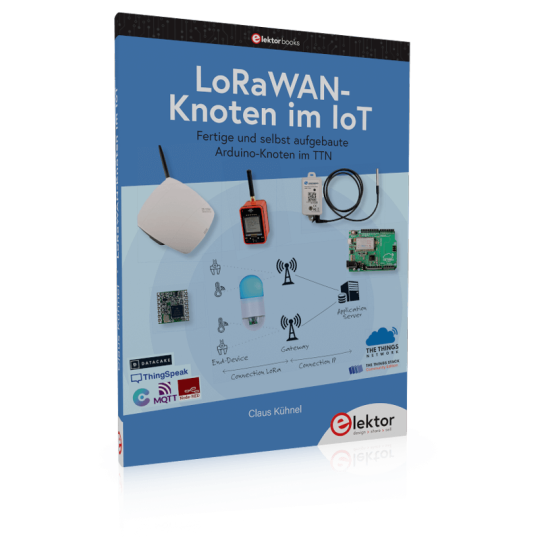
View On WordPress
0 notes
Photo

Use the browser-based, code-server editor on your PC to write programs on your Raspberry Pi 4. Credit: @tom's Hardware More info: https://www.tomshardware.com - ➖➖➖➖➖➖➖➖➖➖➖➖ Follow Us On: @decoders8421 Tag Your Friends 👼. Ask any query or doubt in comments. ➖➖➖➖➖➖➖➖➖➖➖➖ - #fpga #atmega #arm #nxp #embedded #developmentboard #arduinouno #raspberrypi3 #stm32 #esp32 #lorawan #lora #ai #ml #beagleboneai #sbc #cortex #udoo #singleboardcomputer #iot #zigbee #opencv #raspberrypicamera #raspberry #raspberrypizero #rpi #zigbee #arduino #raspberrypi4 #raspberrypi3bplus (at Mumbai, Maharashtra) https://www.instagram.com/p/CEhRPRBnBEr/?igshid=dv1nv45b2ro3
#fpga#atmega#arm#nxp#embedded#developmentboard#arduinouno#raspberrypi3#stm32#esp32#lorawan#lora#ai#ml#beagleboneai#sbc#cortex#udoo#singleboardcomputer#iot#zigbee#opencv#raspberrypicamera#raspberry#raspberrypizero#rpi#arduino#raspberrypi4#raspberrypi3bplus
0 notes
Photo
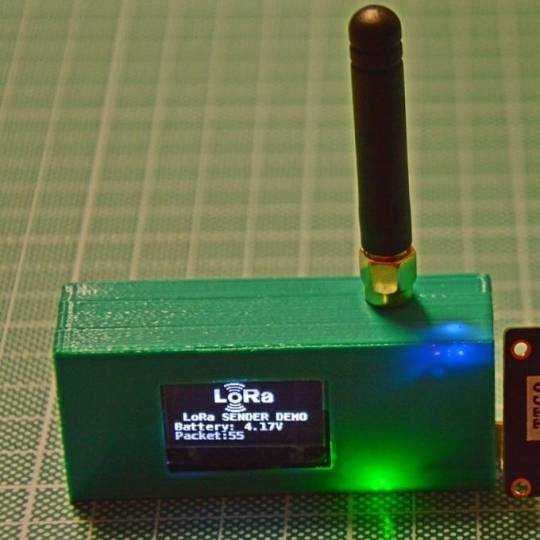
The second part of the article about the @ttgo_by_lilygo #TTGO #LORA32 is arrived! In this article there is a *complete* working example. #sourcecode is about a point-to-point #lora communication but with some extra features added letting anyone use the full capabilities of this board: both transmitter and receiver do a log file on the #sdcard If attached and the #battery voltage is monitored. I've explained all the issues about the usage of the two user-available SPI peripherals and about the battery/USB/external power usage. Thanks to #digitspace for giving me those board to experiment with. Read the full article in the bio. You must had read the previous article in order to understand perfectly: it's linked in the article you can reach from the bio. . . . . . . . . . . . . #wireless #esp32 #esp8266 #espressif #wifi #lorawan #lpwan #sigfox #loraalliance #semtech #arduinoide #smarthome #iot #automation #homeautomation #3dprinting #domotica #embeddedsystems #maker #coding #programmer https://www.instagram.com/p/CC-p2nZqPC9/?igshid=zoffk7v5mdmc
#ttgo#lora32#sourcecode#lora#sdcard#battery#digitspace#wireless#esp32#esp8266#espressif#wifi#lorawan#lpwan#sigfox#loraalliance#semtech#arduinoide#smarthome#iot#automation#homeautomation#3dprinting#domotica#embeddedsystems#maker#coding#programmer
0 notes
Photo

LIVE PARA O SORTEIO DO ESP. Fica ligado galera, próxima segunda, dia 18/05 iremos sortear o ESP q tá rolando em um post aqui no meu perfil e aproveitar vamos falar do ESP LORA com o @eliezer.neto_ que vai nos mostrar um projeto com ele. Quem quiser aprender Lora compra a placa na @filipeflop e o livro "Projetos com ESP32 e LoRa" de @pedro_bertoleti aí garanto que vc será fera em LoRa Wan. #lora #lorawan #esplora #esp32cam #esp32 #espnodemcu #nodemcu #makerheroclub #makers #maker #automation #IoT #internetofthings #internetdascoisas (em Pixels - Escola de Design e Tecnologia - Bairro de Fátima) https://www.instagram.com/p/CAOVeD4HCAl/?igshid=z7fr2vf40ssg
#lora#lorawan#esplora#esp32cam#esp32#espnodemcu#nodemcu#makerheroclub#makers#maker#automation#iot#internetofthings#internetdascoisas
0 notes
Text
Tree moisture meters
I had an interesting time last week attending the 4th Trees, People and the Built Environment (TPBE4) conference run by the Chartered Foresters. Some interesting sessions and worthy sentiments but I didnt get any sense of urgency.
A couple of the sessions addressed the use of technology in the urban forest. For example Nadina Galle talked about the Internet of Nature and the application of Smart City thinking, a city-wide network of sensors using AI to make better decisions about deployment of resources. GreenCityWatch have developed tools to create an inventory of urban trees using commercial high-resolution imagery and some open-source image analysis tools. Treemania aims to provide a network of moisture sensors to alert council staff to the need to water newly planted trees.
I have a love-hate relationship with these ideas. On the one hand they too often seem like expensive, irrelevant and authoritarian structures, all bright and shiny to lure unsuspected city councils desparate to show they are doing something towards the climate emergency. On the other hand, I’m a bit of a geek and love the idea of sensors to bring the life of trees to wider notice. Moisture sensors also fit well with a planned platform to assist citizens to look after new trees, in particular 590 trees being planted in deprived areas of Bristol, part-funded by the Urban Tree Challenge Fund.
Treemania’s sensor seemed from the pictures to use a common capacitive moisture sensor. I thought a remote sensor could be based on a board I’ve planned to use on the boat for remote sensing of water level and battery state. I’ve also been looking at it as a basis for a remote dendrometer. The board is an ESP32 with integrated GSM module, costing £15 or less. GSM (2G) is expected to continue to be supported in the UK through to 2025. Rui Santos has a great tutorial on using this board with Arduino code for just such a project. A capacitive soil moisture sensor costs a few quid, a temperature sensor likewise. The board has an integrated socket and charger for a 3.7v LiPo battery. In use the sensor will only need to report at a very low frequency - maybe only a few times a day, and with the ESP deep sleep mode the device should run unattended for a month or more. Soak testing is underway.
Acquiring a suitable SIM is challenging. Although mobile internet on a pay-monthly contract is down to £1 a Gb, minimum payment is around £10 a month. Given that only a Kb or so is used for a single HTTP GET to transmit the data, the device needs only a few Mbs a month. I found a couple of companies specialising in IoT connectivity. The cheapest is ThingsMobile, based in Milan and the cost is more like £10 per annum. Even here, the cost per Mb is 100s of times more expensive than your regular Pay monthly sim. It took ages to arrive but works fine and at E0.12 / Mb is pretty good.
So the bill of materials is:
TTGO T-Call ESP32 SIM800L board
Capacitive Moisture Sensor
DS18B20 Waterproof Digital sensor
3.7v LiPo
waterproof container
Overall cost for the components should be under £40.
Wiring is straightforward: The moisture meter needs 3.3v power and an A2D pin (ADC0) ; the thermometer is a one-wire interface needed a digital I/O pin (Pin25) with a 4K7 pull-up resistor. Rui also has a great tutorial on interfacing this sensor. I got stuck for a while on this, not realising which GPIO pins supported I/O. Accurate pin-out diagrams and the datasheet for the right variant of board are essential. A small auxiliary veroboard wired directly to the ESP32 board handles these connections. The ESP32 board is supplied with a simple aerial which worked fine. A better quality aerial costs a few quid.
This is the current lashup

Rough sketch of wiring: R is 4K7

The Arduino script hard-codes the GPRS parameters, the HTTP parameters to use GET to send the data to the server and the sleep interval. This code is on GitHub
Periodic readings are sent to my server where they are logged and graphed and from where alerts can be generated. A test harness only at present so nothing worth sharing yet.
Summary
The prototype is working. The moisture sensor needs good waterproofing and seems a bit sensitive to placement. The power draw of the GSM is quite high high during transmission. I’m also running a WiFi version and of course its power draw is much less. It would be nice if the Bristol LoRaWAN network was up and running but that seems to have gone very quiet.
The main problem is with power. This board includes a (very small) JST connector for a LiPo and a charger, For a while it switched happily from USB power to battery and back without manual intervention. LiPos are small and expensive however and I’m currenly experimenting with 18650 batteries which offer better storage/£ .
References
T-Call pinout
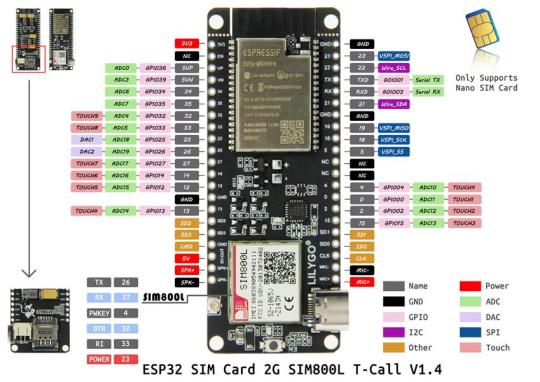
ESP32-WROVER datasheet
TTGO T-Call on GitHub
1 note
·
View note
Text
New discussion group on Facebook
We have a new discussion group on Facebook https://www.facebook.com/groups/hackthebase, which is designed to share information, insights, and opinions on various topics of IoT, such as Arduino, LoRaWAN, LPWAN, ESP8266/ESP32, hardware design, DevOps and tools for IoT development, etc.
Follow us on Facebook for the latest news, events, and workshops https://www.facebook.com/hackthebase

0 notes
Text
Módulo LoRaWAN da Radioenge Tutorial Completo
O módulo LoRaWAN da Radioenge é homologado pela Anatel e 100% fabricado no Brasil e neste post você aprende tudo sobre ele.
O módulo LoRaWAN da Radioenge é uma placa de fabricação nacional e homologada que pode ser usada com qualquer microcontrolador ou microprocessador através de comandos AT via porta serial.
1 O que é LoRaWAN?
O LoRaWAN é um protocolo que desenvolvido para aumentar o alcance da rede LoRa e utiliza nós em estrela para diminuir ao máximo o consumo da bateria, de modo que os ‘end nodes’ fiquem…

Ver no WordPress
#arduino lorawan#arduino lorawan library#class a lorawan#esp32 lorawan#esp32 lorawan gateway#lorawan#lorawan board#lorawan concentrator#lorawan development kit#lorawan devices#lorawan esp32#lorawan examples#lorawan gateway#lorawan network
1 note
·
View note
Video
youtube
A LoRaWAN enabled Energy monitoring device using ESP32 and PZEM004T Energy Monitoring Module.
#device #module #lorawan #devices #lora #iot #embedded #modules #firmware #rtos #iotdevices #esp32 #electronics #iotsolutions #embeddedsystems #iotdevelopment #arduino #iotworld #iotplatform #sensors #microcontroller #internetofthings #embeddedsoftware
#device module lorawan devices lora iot embedded modules firmware rtos iotdevices esp32 electronics iotsolutions embeddedsystems iotdevelopme#device
0 notes
Text
Long-Range IoT Communication with LoRa Modules: SX1278 and ESP32 with Display
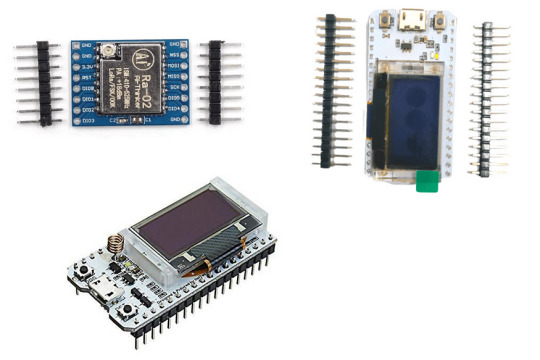
SX1278 LoRa Module
The SX1278 LoRa module is a popular choice among developers due to its low power consumption, long-range capabilities, and support for multiple frequency bands. It is based on the Semtech SX1278 chip, which is a low-power, long-range transceiver designed for use in the Industrial, Scientific, and Medical (ISM) frequency bands. The module operates in the 433MHz frequency band and has a range of up to 5 km in open space.
The SX1278 LoRa module can be easily integrated into a variety of applications, including Internet of Things (IoT) devices, smart cities, and remote monitoring systems. It supports a wide range of data rates, from 300 bps to 37.5 kbps, and has a programmable output power up to +20 dBm.
One of the key advantages of the SX1278 LoRa module is its low power consumption. It has a sleep mode that consumes only 0.1 µA of current, making it an ideal choice for battery-powered applications. The module also has a built-in temperature sensor and a low battery detector, which can be used to optimize power consumption and extend battery life.
ESP32 LoRa with Display SX1278
The ESP32 LoRa with Display SX1278 is a popular implementation of the SX1278 LoRa module. It combines the low power consumption and long-range capabilities of the SX1278 with the processing power and connectivity features of the ESP32 microcontroller. The module has a 128x64 OLED display, which can be used to display sensor readings, status messages, and other information.
The ESP32 LoRa with Display SX1278 is compatible with the Arduino IDE and can be programmed using the Arduino programming language. It has a built-in WiFi and Bluetooth connectivity, which allows it to connect to other devices and the Internet. The module also has a built-in antenna, which simplifies the integration process and reduces the overall size of the device.
One of the key features of the ESP32 LoRa with Display SX1278 is its ease of use. It comes with a preloaded firmware that can be easily customized using the Arduino IDE. The firmware includes support for LoRaWAN, a popular protocol for building large-scale IoT networks. The module can also be used with other LoRa protocols, such as LoRa-MAC, LoRa-RAW, and LoRa-P2P.
ESP32 LoRa with Display SX1276
The ESP32 LoRa with Display SX1276 is another popular implementation of the ESP32 LoRa module, but this time with the SX1276 chip. The module operates in the 868 MHz frequency band and has a range of up to 10 km in open space. Like the SX1278 module, it has a low power consumption and can be used in a variety of applications, including smart agriculture, environmental monitoring, and asset tracking.
The ESP32 LoRa with Display SX1276 has a 128x64 OLED display, which can be used to display sensor readings and other information. It also has a built-in antenna and a WiFi/Bluetooth connectivity, which allows it to connect to other devices and the Internet.
One of the key advantages of the ESP32 LoRa with Display SX1276 is its compatibility with the Arduino IDE. It can be programmed using the Arduino programming language and comes with a preloaded firmware that can be easily customized. The firmware includes support for LoRaWAN and other LoRa protocols, making it easy to build large-scale IoT networks.
In addition to its low power consumption and long-range capabilities, the ESP32 LoRa with Display SX1276 has a variety of features that make it an ideal choice for IoT applications. It has a built-in accelerometer and gyroscope, which can be used for motion sensing and orientation detection. It also has a built-in GPS module, which can be used for location tracking and geofencing.
The module can be powered by a variety of sources, including batteries, solar panels, and external power sources. It also has a deep sleep mode that consumes only 10 µA of current, making it an ideal choice for battery-powered applications.
Conclusion
The SX1278 LoRa module and the ESP32 LoRa with Display modules are two popular choices for developers looking to build IoT applications that require long-range communication and low power consumption. The SX1278 module is a versatile solution that can be easily integrated into a variety of applications, while the ESP32 LoRa with Display modules provide additional features, such as processing power, connectivity, and display capabilities.
When selecting a LoRa module, developers should consider their specific requirements, such as range, power consumption, data rate, and frequency band. They should also consider the features and capabilities of the module, such as built-in sensors, connectivity options, and compatibility with different protocols and programming languages.
Overall, LoRa technology provides an attractive alternative to traditional wireless communication technologies, such as WiFi and Bluetooth, for IoT applications that require long-range communication and low power consumption. With the availability of versatile LoRa modules, such as the SX1278 LoRa module and the ESP32 LoRa with Display modules, developers have more options than ever before to build innovative IoT solutions.
0 notes
Photo

Geht Morgen in den Druck und am 25.09.2020 in den Verkauf.
#Arduino#ESP32#ESP8266#Hardware#Heltec#IoT#LCD#LoRaWAN#M5ATOM#M5Stack#M5StickC#Maixduino#mikroBUS#MQTT#Neopixels#PIR#Teensy#ThingPulse#WiFi
0 notes
Photo

NVIDIA unveiled the Jetson Xaview NX at GTC 2020 in as a significant upgrade over the NVIDIA Jetson TX2. - ➖➖➖➖➖➖➖➖➖➖➖➖ Follow Us On: @decoders8421 Tag Your Friends 👼. Ask any query or doubt in comments. ➖➖➖➖➖➖➖➖➖➖➖➖ - #fpga #atmega #arm #nxp #embedded #iot #developmentboard #rpi #raspberrypi #arduino #arduinouno #raspberrypi3 #tinkercad #tinker #stm32 #esp32 #lorawan #lora #ai #ml #nvidiajetson #raspberrypi4 #sbc #cortex #udoo #singleboardcomputer #iot #zigbee #opencv #raspberrypicamera https://www.instagram.com/p/CBqioLhn3FT/?igshid=1w22j3p5uz7h
#fpga#atmega#arm#nxp#embedded#iot#developmentboard#rpi#raspberrypi#arduino#arduinouno#raspberrypi3#tinkercad#tinker#stm32#esp32#lorawan#lora#ai#ml#nvidiajetson#raspberrypi4#sbc#cortex#udoo#singleboardcomputer#zigbee#opencv#raspberrypicamera
0 notes